
How to grow a heather shrub?
Our tips for successfully planting and maintaining in the ground as well as in pots.
Contents
The heathers are the largest of the heathers. Classic varieties measure around 30 to 50 cm in height and form true little carpet-like displays, while shrub varieties can reach several metres in height.
These evergreen perennial plants can bloom in both winter and summer, showcasing lovely colours of pink, white, mauve, or even yellow.
Easy to maintain, shrub heathers can be grown in pots or in the ground. Here are our tips for successfully planting and caring for them.
To learn everything about cultivating heather, we invite you to discover our article: Heathers: planting, pruning, and maintaining
Which varieties of heathers should you choose?
Due to their generally slow growth and modest silhouette, bush heathers can be cultivated both in pots and in the ground.
The smallest bush varieties
They are ideal for dressing balconies and terraces, as well as rockeries, the front of borders, and slopes. This is the case, for example, with:
- the bush heather Erica nana ‘Limoncello’, with its stunning lemon-yellow flowering from March to April and its modest growth (50 cm in height and 40 cm in spread)
- the Corsican heather Erica terminalis flowering in summer with small pink bells, measuring 1.2 metres in height and 1 metre in spread
- the Cape heather Erica verticillata with its 90 cm height and 80 cm spread, offering a bright pink flowering from June to August
The largest bush varieties
They will find their place in hedges, in heather soil shrub borders, or will be perfect as standalone plants. Here, opt for:
- the western heather Erica mediterranea, forming a beautiful bush of 1.2 metres in all directions, producing pink-lilac flowers from January to March
- the Christmas bush heather Erica canaliculata, measuring 1.5 metres in all directions, whose winter flowering from December to February reveals adorable pink to violet bells
- the arborescent heather ‘Great Star Le Vasterival’, with its 1.5 metres in height and 2 metres in spread, flowering from March to May with lovely white bells tinged with pink
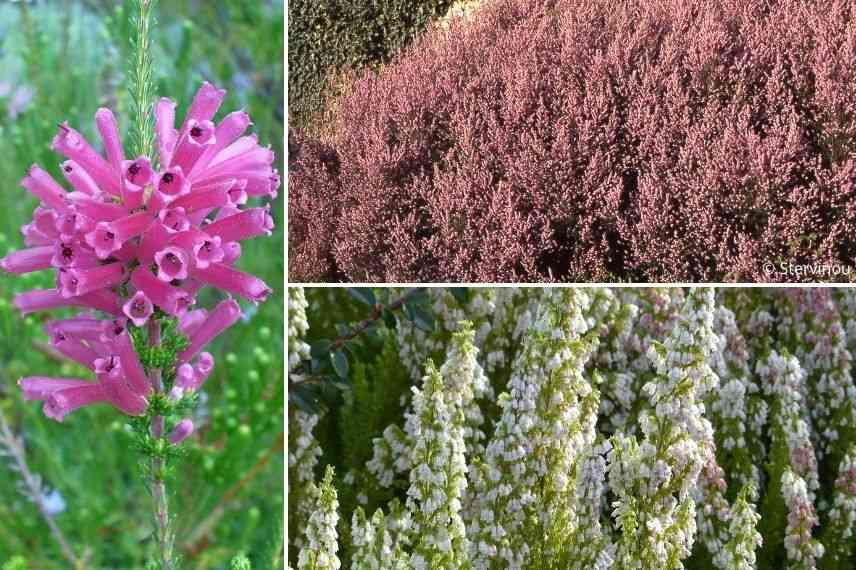
Erica verticillata (photo Andrew Massyn -Wikimedia), Erica mediterranea, Erica ‘Great Star Le Vasterival’
Read also
Heathers: planting, pruning and careWhen to plant a heather shrub?
Heath can theoretically be planted all year round, except during periods of summer drought or winter frost. Autumn and spring, however, remain the best times for planting, as temperatures are mild and the soil is warmed.
Discover other Heathers
View all →Available in 2 sizes
Available in 0 sizes
Available in 0 sizes
Available in 0 sizes
Available in 1 sizes
Available in 3 sizes
Available in 1 sizes
Available in 2 sizes
Available in 2 sizes
Available in 3 sizes
Planting Shrubby Heathers in Open Ground
The Substrate
Heathers prefer poor, light, and well-drained soils, which prevent water from stagnating and risking root rot. Sandy soils are quite suitable for them. Conversely, heavy, clayey soils with high water retention should be avoided. Drainage can be improved by adding sand, gravel, clay balls, or pumice to the planting hole.
Regarding pH, heather prefers acidic to neutral soils and does not appreciate limestone at all. Some varieties, such as western heather Erica mediterranea, can, however, tolerate a bit of limestone. To provide the necessary balance for its proper development, you can mix your garden soil or potting mix with a good half of heather soil at planting.
And if you have any doubts about the suitability of a shrub heather in your garden, feel free to test our web application Plantfit. It will indicate which plants best match your growing conditions.
Planting
- Place the root ball or pot of your heather in a basin or bucket of water to rehydrate it and facilitate the removal of the container.
- Dig a planting hole suitable for the size of your heather, slightly larger than the size of the root ball.
- Add any necessary supplements if needed (drainage elements, heather soil) to achieve a mix that meets your heather’s requirements.
- Position the plant in the planting hole, without burying it too deeply, then cover with substrate.
- Avoid planting your heather in a hollow, which could facilitate water stagnation. Instead, create a small mound around the root ball to allow water to drain more easily.
- Lightly firm the soil around the root ball with your hands.
- Water generously at the base of the plant.
- Mulch to limit evaporation, for example with pine bark.
Shrub or arborescent heathers are generally planted in isolation. If you wish to grow several varieties side by side, be sure to maintain spacing proportional to the spread at ripeness of the plant.
Exposure
Shrub heathers thrive in partially shaded or sunny situations, but protected from the scorching rays of the sun.
It is worth noting that heathers have the advantage of tolerating urban pollution in city gardens, as well as sea spray in coastal gardens.
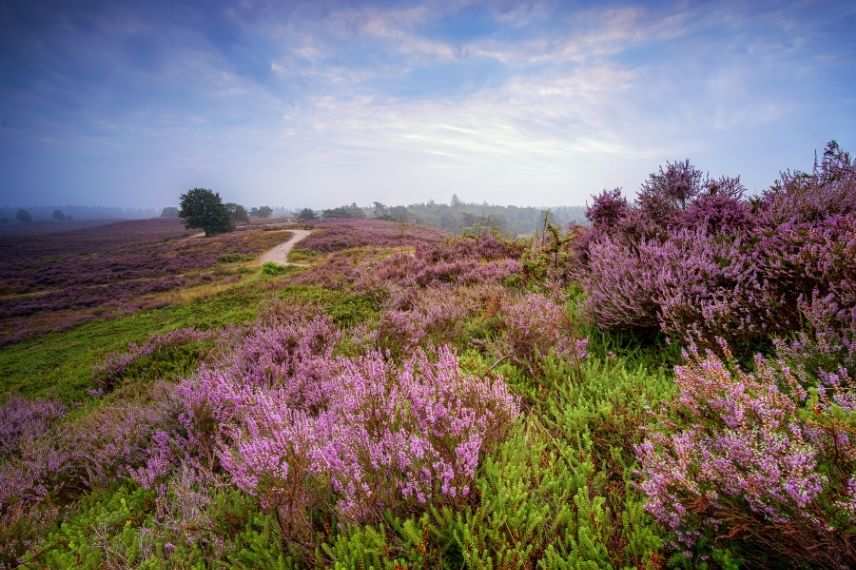 Heathers in their natural habitat
Heathers in their natural habitat
Read also
Pruning heather: when and how?Planting Shrubby Heathers in Pots
Heath bushes can thrive very well in planters or pots, adding colour to a windowsill, balcony, terrace, or small spaces. Pot cultivation also allows you to enjoy heaths in cases of calcareous soil, which is unsuitable for their planting in the garden, or in regions with harsh winters.
The Container
Choose a container with drainage holes to allow excess watering or rainwater to escape. Opt for a pot, planter, or trough that is approximately 30 to 40 cm deep.
For materials, we recommend clay or terracotta, which allows the substrate to breathe better. You can also consider plastic pots or wooden troughs.
The Substrate
For planting your heath bush in a pot, choose a mix of:
- 2/3 of heather soil
- 1/3 of good quality horticultural compost, compost for planters and pots, or garden soil (if it is light and not calcareous)
- a handful of sand to optimise drainage (optional)
The Planting
- Install a drainage layer of about 5 cm at the bottom of the container: clay balls, gravel, or broken terracotta.
- Place the root ball in the container, then fill in with the substrate mix.
- Lightly compact.
- Add more substrate if necessary, until the root ball is covered.
- Water generously at the base of the plant.
- Mulch to limit evaporation, for example with pine bark.
Do not place a saucer under your container: this will prevent water from stagnating. You can even elevate the container on small blocks to further improve drainage and allow excess water to escape better.
Heath bushes in pots should be repotted into larger containers as soon as they start to feel cramped, approximately every 2 to 3 years.
Exposure
Place your heath bush in a pot in a semi-shaded or sunny position, but protected from the harsh rays of the sun. Also protect it from cold or drying winds and heavy rain.
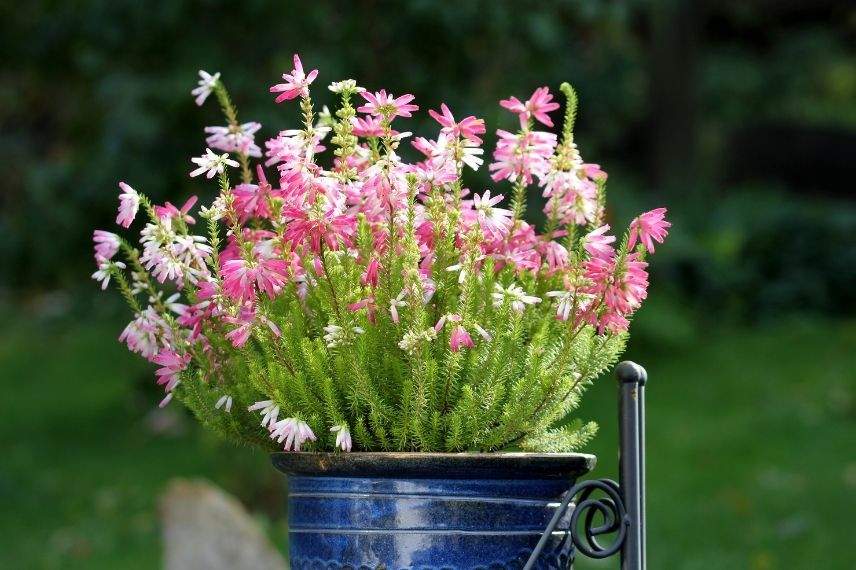 Heath in pot
Heath in pot
Maintenance of Shrubby Heathers
Heather is an easy-to-cultivate plant that requires little maintenance. It is also relatively resistant to diseases and pests. However, potted specimens will require slightly more regular care, as the substrate tends to dry out and lose its nutrients more quickly than in open ground.
Watering
In the first year, whether the heather is in a pot or in the ground, ensure regular watering about once a week. Increase the frequency if the substrate dries out, during periods of intense summer heat, or with low rainfall.
In the ground, once well established, it can then naturally do without watering and rely on rainwater (except during heatwaves).
In pots, regular watering will remain necessary as soon as the substrate becomes dry. This should be increased during dry spells.
Preferably use rainwater, as tap water may be too calcareous. Always water at the base of the plant, avoiding wetting the foliage as much as possible.
Fertilisation
Heathers are frugal plants, appreciating poor, light soils. Therefore, the addition of fertiliser is not necessary in open ground.
In pots, after the first year of planting and before new growth begins, you may optionally add a thin layer of well-decomposed household compost. Rake it in gently with a tool or fork to incorporate it into the substrate.
If your heather is mulched with pine bark, its decomposition will gently nourish the plant without the need for additional fertiliser.
Pruning
Due to its slow growth and modest development, the shrubby heather does not require specific pruning and can be left to grow freely.
A light maintenance pruning just after flowering can simply be carried out: remove faded flowers using sharp, disinfected shears or pruning shears.
After a few years, pruning can also help to shape your heather if needed and to remove dead wood. This pruning should always be done gently, as shrubby heathers do not tolerate severe cutting back, which can affect their future flowering.
For more information, we invite you to consult our dedicated article: Pruning Heather: When and How?
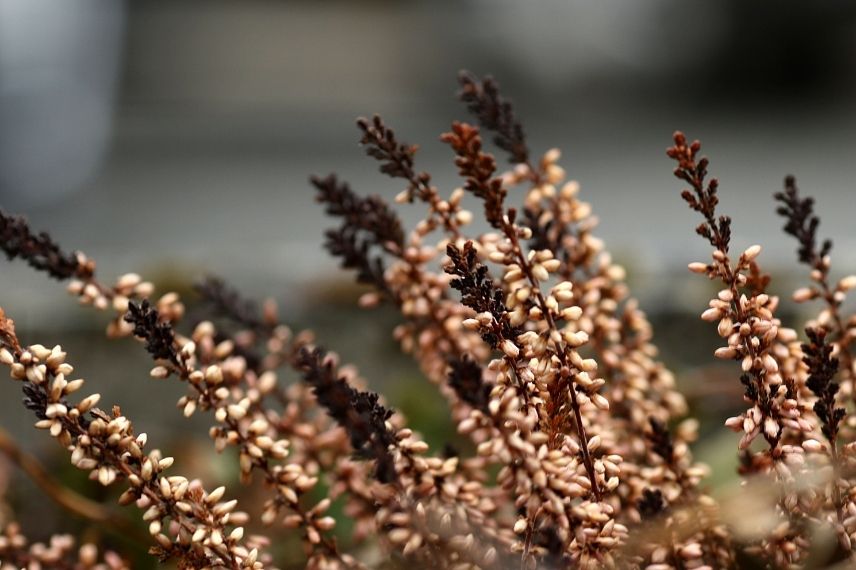
Remove the flowers of the heather when they are faded.
Diseases
Heather is a plant that is quite resistant to pests and diseases.
In case of an aphid attack, use a natural repellent by mixing 1 litre of lukewarm water with a tablespoon of black soap. The solution should be sprayed in the late afternoon on the affected parts.
If your shrubby heather is not grown under good conditions and develops in overly heavy and damp soil, it may be affected by a fungal disease: phytophthora. Cut and remove the affected parts immediately to prevent the spread of fungi to the rest of the plant and improve soil drainage.
Wintering
Shrubby heathers have lower hardiness than other heathers, generally ranging from -5 to -10°C. They should therefore be grown in open ground only in regions with mild winters, in Mediterranean zones and along the Atlantic coast.
In regions with harsh winters, potted shrubby heathers must be sheltered in a frost-free location.
- Subscribe!
- Contents
































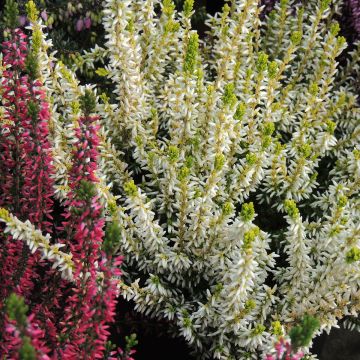

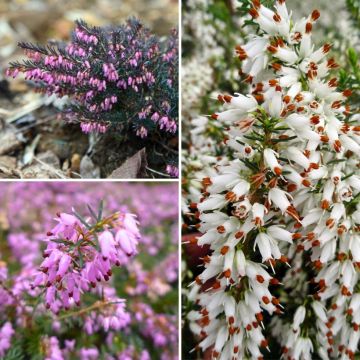

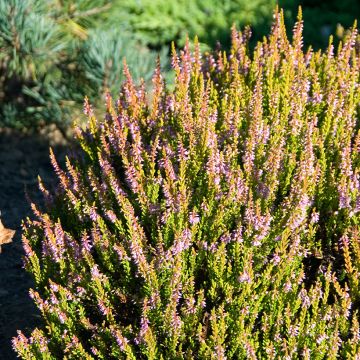

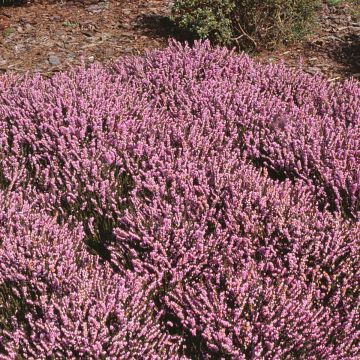
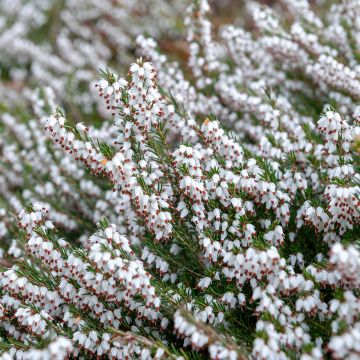
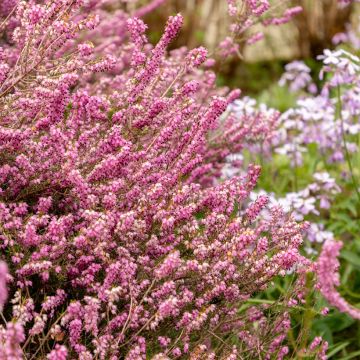
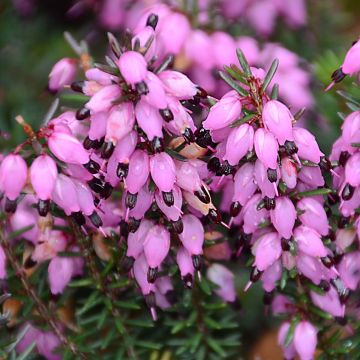
Comments